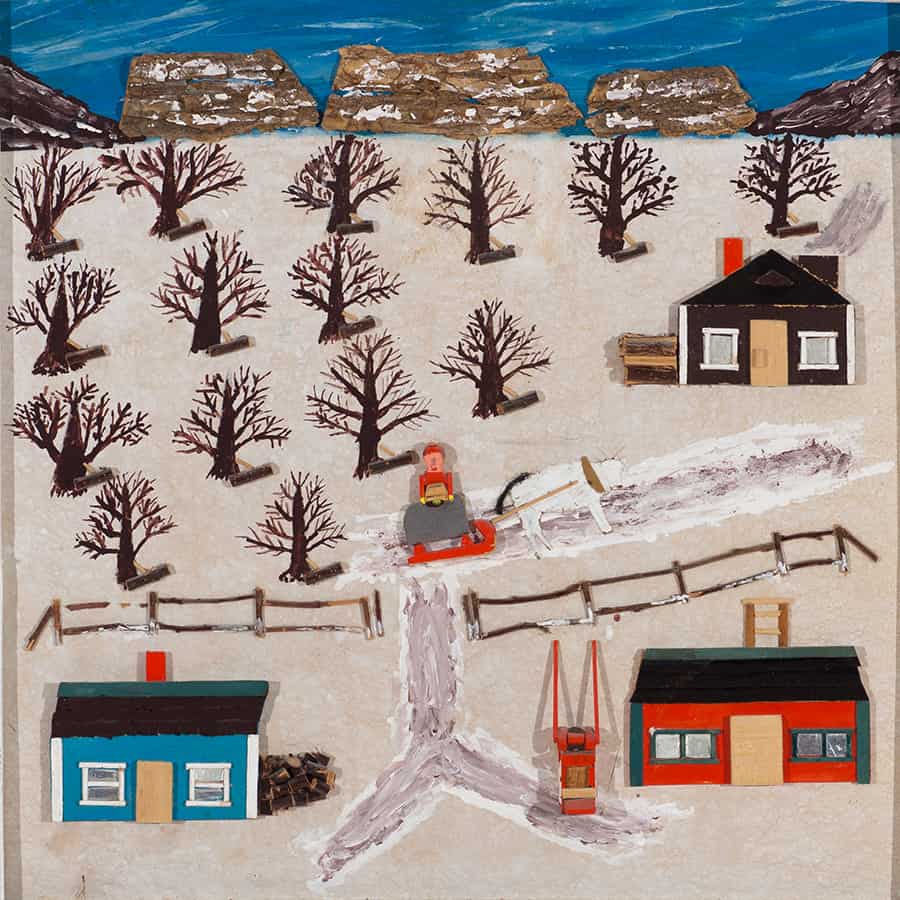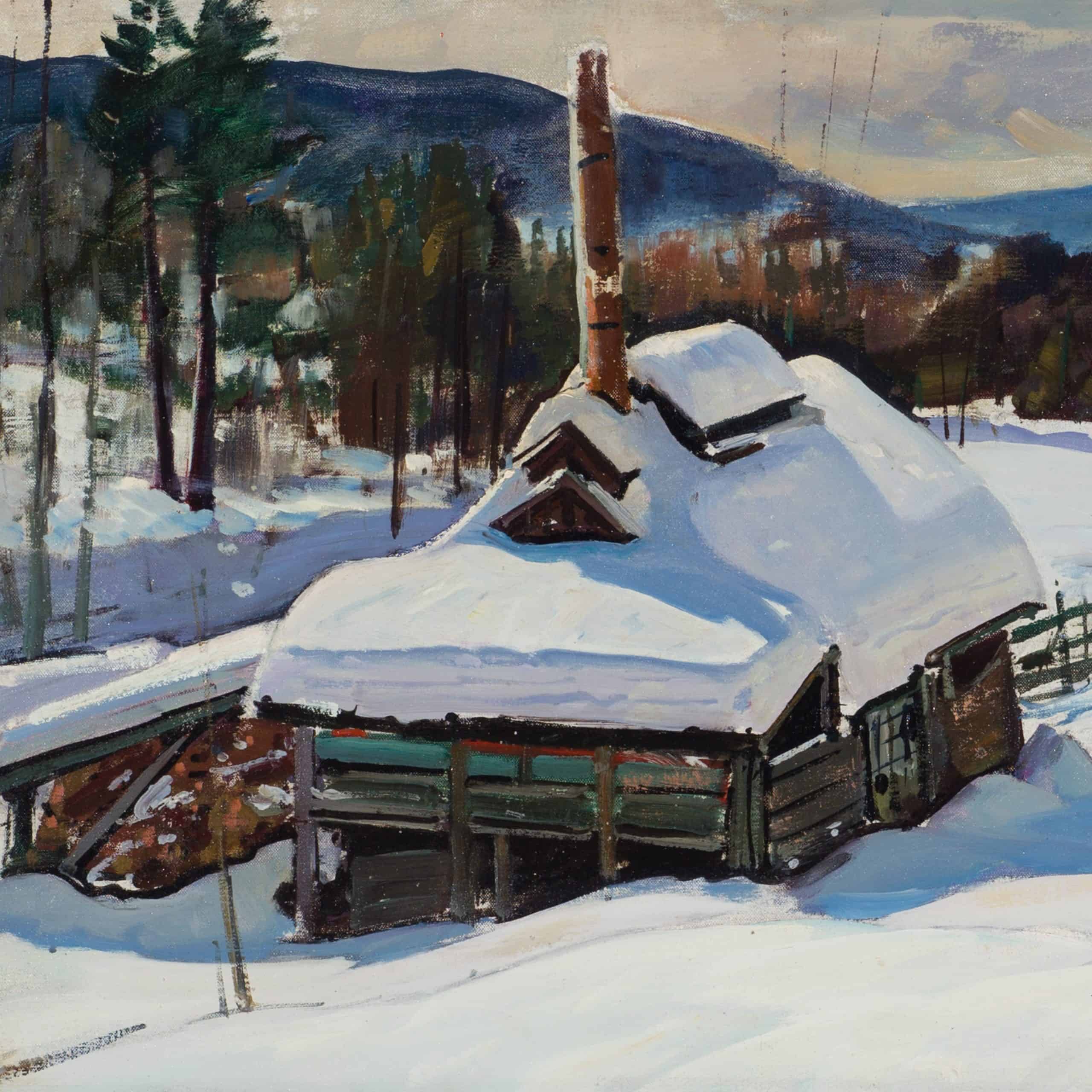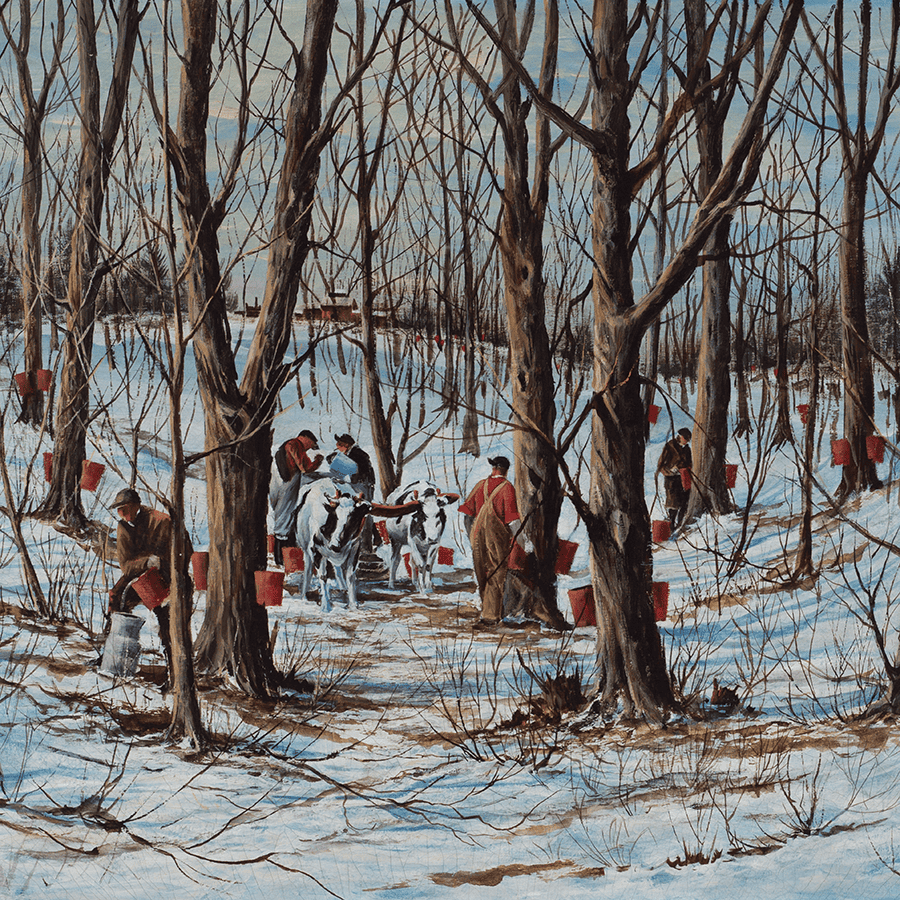Sugaring
Sugaring done the old-fashioned way seems like a prehistoric process. Clear, watery sap from a Sugar Maple tree (Acer saccharum) is collected in buckets for weeks in late spring by going around the woods on a sled pulled by horses or oxen, transferred to tanks, and then boiled for days by standing next to a large, blazing metal “arch” (which is kept as hot as an inferno by having spent much of the previous summer and fall chopping down other kinds of trees that do not ooze this special sap and then splitting up tons of logs into huge piles of cordwood) to evaporate it until the sap by a chemical process all on its own becomes an elixir from the gods – pure maple syrup. It is not magic – it is absurdly hard work. And success is all in the timing: Nights must freeze, and days must cause the snow to melt, but just a little, not too much.
Excerpt from the book For the Love of Vermont: The Lyman Orton Collection

Sugaring II, c.1980
Wood Construction, Paint | 20 x 24 in.
Roland Rochette (1887-1986) GRACE Artist
In an interview, Roland Rochette once said: “I like to do things that the younger generation haven’t seen. I think it’s kind of instructive for the younger people. Younger people, a lot of them, don’t believe what the older people did and how hard they worked.”
Today’s younger generations in Vermont mostly see maple sugar trees connected to miles and miles of blue plastic tubing and a vacuum pump, and few of them ever see sugaring done the way Rochette has shown it here. An ox is pulling a sled that has a big tub on it, and the man beside the sled has gone from tree to tree and emptying the sap into the tub, one bucket at a time. The man and the ox are on their way back to the sugarhouse, the building in the upper right. We see steam rising out of the roof vent, and, next to the sugarhouse, a stack of logs (which Rochette made out of tiny twigs), fuel to feed the fire that is boiling off the sap into syrup.

Green Sugar Shack, c.1940
Oil on Canvas | 18 x 25 in.
Aldro Hibbard (1886-1972)
Old sugarhouses like this one were often far off the beaten path, miles deep into the sugarbush, with nothing else close by. Nowadays, sugarhouses tend to be closer to a road or homestead.
One of the stories his friend and biographer John Cooley told about Aldro Hibbard’s winters in Vermont was his penchant for hitching rides with workers headed to a logging site deep into the woods so that he could spend the day there. Cooley wrote that Hibbard had to “rise before dawn and make his rendezvous with the men to catch a ride on their sled, but it was worth the bite of the early cold.”
Cooley noted that Hibbard wore “heavy woolen underwear, two and sometimes three layers of outer clothes, shoes liberally padded with felt, and loose cotton gloves that could be easily shed and reapplied, especially to the right hand.” And, that snowshoes “were essential.” He would paint, Cooley wrote, and then if he got too cold standing still, he would work with the loggers to warm up.

Gathering Sap, 1947
Oil on Canvas | 22 ¼ x 28 in.
Stephen Belaski (1909-1987)
Gone are the days when it was common to see men in woolen pants and snow boots emptying wooden sap buckets in Vermont’s sugarbush. The modern method of gathering sap involves miles and miles of blue plastic tubing, no oxen required. This day’s work, as Stephen Belaski captured it, shows the ideal weather conditions for the maple sap to be running – nights below freezing, and days above 32 degrees F.
A native of Bellows Falls, Vermont, a town on the banks of the Connecticut River, Stephen Belaski painted landscapes and rural scenes. Some art dealers claim that Belaski “was known to not sign every one of his works of art.” Fortunately, he did sign and date this canvas.
Belaski was well known in Rutland, Vermont because he was the artist commissioned to complete a series of paintings for the old post office in 1937. (It is now a federal courthouse and the post office has relocated.) The title of the six murals is Early History of Vermont. These were done as a project for TRAP (Treasury Relief Art Project).
